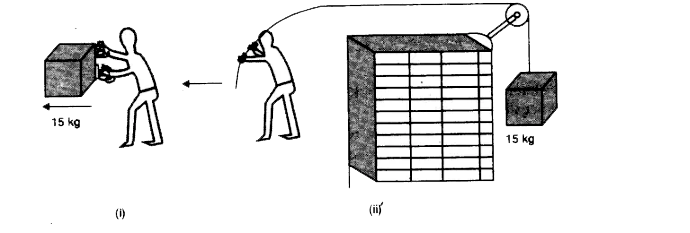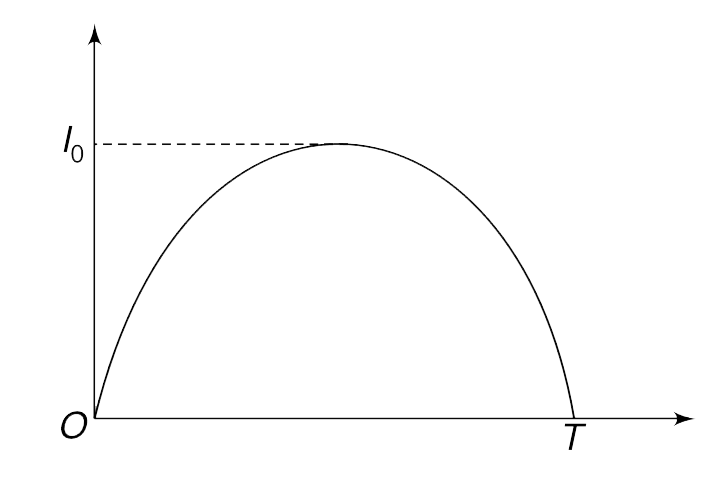The discharging current in the atmosphere due to the small conductivity of air is known to be 1800 A on an average over the globe . Why then does the atmosphere not discharge it self completely in due course and becomed electrically neutral ? In other words, what keeps the atmosphere charged?
The lightning and thunderstorms at different places all over the planet continuously charge the atmosphere. The atmosphere gets discharged in the regions having ordinary temperature. Due to these two opposing processes the charge on the system remains balanced.
Topper's Solved these Questions
- BOOK - MODERN PUBLICATIONCHAPTER - ELECTROSTATIC POTENTIAL AND CAPACITANCE EXERCISE - NCERT FILE Solved (Exemplar Problems) (Very Short Answer Type Questions)5videos
ELECTROSTATIC POTENTIAL AND CAPACITANCE
- BOOK - MODERN PUBLICATIONCHAPTER - ELECTROSTATIC POTENTIAL AND CAPACITANCE EXERCISE - NCERT FILE Solved (Exemplar Problems) (Short Answer Type Questions)5videos
ELECTROSTATIC POTENTIAL AND CAPACITANCE
- BOOK - MODERN PUBLICATIONCHAPTER - ELECTROSTATIC POTENTIAL AND CAPACITANCE EXERCISE - NCERT FILE Solved (Additional Exercises) (Answer carefully)7videos
ELECTROSTATIC POTENTIAL AND CAPACITANCE
- BOOK - MODERN PUBLICATIONCHAPTER - ELECTROMAGNETIC WAVESEXERCISE - CHAPTER PRACTICE TEST14videos
ELECTROMAGNETIC WAVES
- BOOK - MODERN PUBLICATIONCHAPTER - MAGNETISM AND MATTEREXERCISE - CHAPTER PRACTICE TEST FOR BOARD EXAMINATION16videos
MAGNETISM AND MATTER
Similar Questions
The discharging current in the atmosphere due to the small conductivity of air is known to be 1800 A on an average over the globe. Why then does the atmosphere not discharge itself completely in due course and become electrically neutral ? In other words, what keeps the atmosphere charged ?
View SolutionAnswer the following:
(a) The top of the atmosphere is at about 400 kV with respect to the surface of the earth, corresponding to an electric field that decreases with altitude. Near the surface of the earth, the field is about 100Vm−1. Why then do we not get an electric shock as we step out of our house into the open? (Assume the house to be a steel cage so there is no field inside!)
(b) A man fixes outside his house one evening a two metre high insulating slab carrying on its top a large aluminium sheet of area 1m2. Will he get an electric shock if he touches the metal sheet next morning?
(c) The discharging current in the atmosphere due to the small conductivity of air is known to be 1800 A on an average over the globe. Why then does the atmosphere not discharge itself completely in due course and become electrically neutral? In other words, what keeps the atmosphere charged?
(d) What are the forms of energy into which the electrical energy of the atmosphere is dissipated during a lightning? (Hint: The earth has an electric field of about 100Vm−1 at its surface in the downward direction, corresponding to a surface charge density =10−9Cm−2. Due to the slight conductivity of the atmosphere up to about 50 km (beyond which it is good conductor), about +1800C is pumped every second into the earth as a whole. The earth, however, does not get discharged since thunderstorms and lightning occurring continually all over the globe pump an equal amount of negative charge on the earth.)View SolutionThe discharging current in the atmosphere due to the small conductivity of air is known to be 1800 A on an average over the globe. Then why does the atmosphere not discharge itself completely in due course and become electrically neutral? In other words, what keeps the atmosphere charged?
View SolutionAnswer the following:
(a) The top of the atmosphere is at about 400 kV with respect to the surface of the earth, corresponding to an electric field that decreases with altitude. Near the surface of the earth, the field is about 100Vm−1. Why then do we not get an electric shock as we step out of our house into the open? (Assume the house to be a steel cage so there is no field inside!)
(b) A man fixes outside his house one evening a two metre high insulating slab carrying on its top a large aluminium sheet of area 1m2. Will he get an electric shock if he touches the metal sheet next morning?
(c) The discharging current in the atmosphere due to the small conductivity of air is known to be 1800 A on an average over the globe. Why then does the atmosphere not discharge itself completely in due course and become electrically neutral? In other words, what keeps the atmosphere charged?
(d) What are the forms of energy into which the electrical energy of the atmosphere is dissipated during a lightning? (Hint: The earth has an electric field of about 100Vm−1 at its surface in the downward direction, corresponding to a surface charge density =10−9Cm−2. Due to the slight conductivity of the atmosphere up to about 50 km (beyond which it is good conductor), about +1800C is pumped every second into the earth as a whole. The earth, however, does not get discharged since thunderstorms and lightning occurring continually all over the globe pump an equal amount of negative charge on the earth.)View SolutionThe earth's surface has a negative surface charge density of 10−9Cm−2 . The potential difference of 400 kV between the top of the atmosphere and the surface results (due to low conductivity of the lower atmosphere) in a current of only 1800 A over the entire globe. If there were no mechanism of sustaining atmosphereic electric field , how much time (roughly) would be required to neutralise the earth's surface ? (This never happens in practice because there is a mechanism to replenish electric charges namely the continual thunder storms and lightning in different parts of the globe). Radius of the earth =6.37×106m.
View SolutionWhat is the force on a common man due to atmospheric pressure? Why one does not feel it?
View SolutionAnswer the following:
a) The casing of a rocket in flight burns up due to friction. At whose expense is the heat required for burning obtained? The rocket or the atmosphere?
b) Comets move around the sun in highly elliptical orbits. The gravitational force on the comet due to the sun is not normal to the comet's velocity in general. Yet the work done by the gravitatonal force over every complete orbit of the comet is zero. Why?
c) An artificial satellite orbiting the earth in very atmosphere loses its energy grdually due to dissipation against atmospheric resistance, howerver small. Why then does its speed increase progressively as it comes closer and closer tothe earth? d)In fig i) the man walks 2m carrying a mass of 15 kg on his hands. In Fig ii) he walks the same distance pulling the rope behind him. The rope goes over pulley, and a mass of 15 kg hangs at its other end. In which case is the work done greater?
 View Solution
View SolutionAnswer the following:
a) The casing of a rocket in flight burns up due to friction. At whose expense is the heat required for burning obtained? The rocket or the atmosphere?
b) Comets move around the sun in highly elliptical orbits. The gravitational force on the comet due to the sun is not normal to the comet's velocity in general. Yet the work done by the gravitatonal force over every complete orbit of the comet is zero. Why?
c) An artificial satellite orbiting the earth in very atmosphere loses its energy grdually due to dissipation against atmospheric resistance, howerver small. Why then does its speed increase progressively as it comes closer and closer tothe earth? d)In fig i) the man walks 2m carrying a mass of 15 kg on his hands. In Fig ii) he walks the same distance pulling the rope behind him. The rope goes over pulley, and a mass of 15 kg hangs at its other end. In which case is the work done greater?
 View Solution
View SolutionAssume that clouds are distributed around the entire earth at a height of 3000m above the ground. The atmosphere can be modeled as a spherical capacitor with the earth as one plate and the cloud as other. When the electric field between the earth and the cloud becomes large, the air begins to conduct and the phenomena is called lightning. On a typical day 4×105C of positive charge is spread over the surface of the earth and equal amount of negative charge is there on the cloud. Resistivity of the air is ρ=3×1013Ωm and radius of the earth =6000km.
(a) Find the resistance of the air gap between the earth’s surface and cloud.
(b) Estimate the potential difference between the surface of the earth and the cloud
(c) In how much time the capacitor formed between the earth and the cloud will lose 63 % of the charge ?View SolutionThe graph given here represents an idealized sinusoidal current flow between a cloud at a height of 1 km and the earth, during a lightning discharge. Value of I0 is 157 kA and T = 0.2 ms. Assume that discharge happens when the electric field in the air between the cloud and the earth becomes equal to the breakdown field of air i.e., E0=3×106V/m
(a) Calculate the total charge flow due to lightning.
(b) Calculate the average current between the cloud and the earth during the lightning.
(c) Assume that the entire charge on the cloud is released during the lightning and estimate the capacitance of the cloud – Earth system.
 View Solution
View Solution

